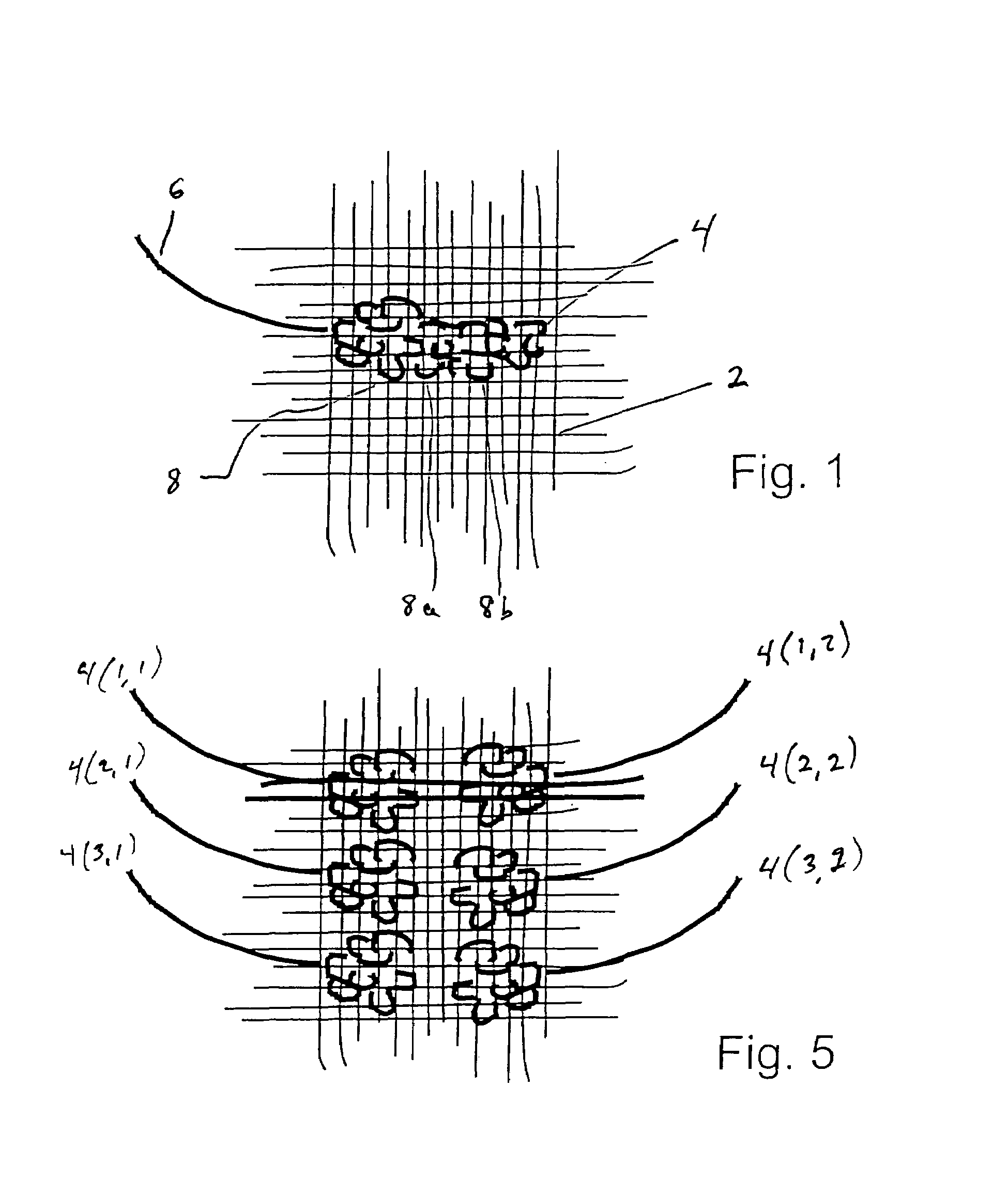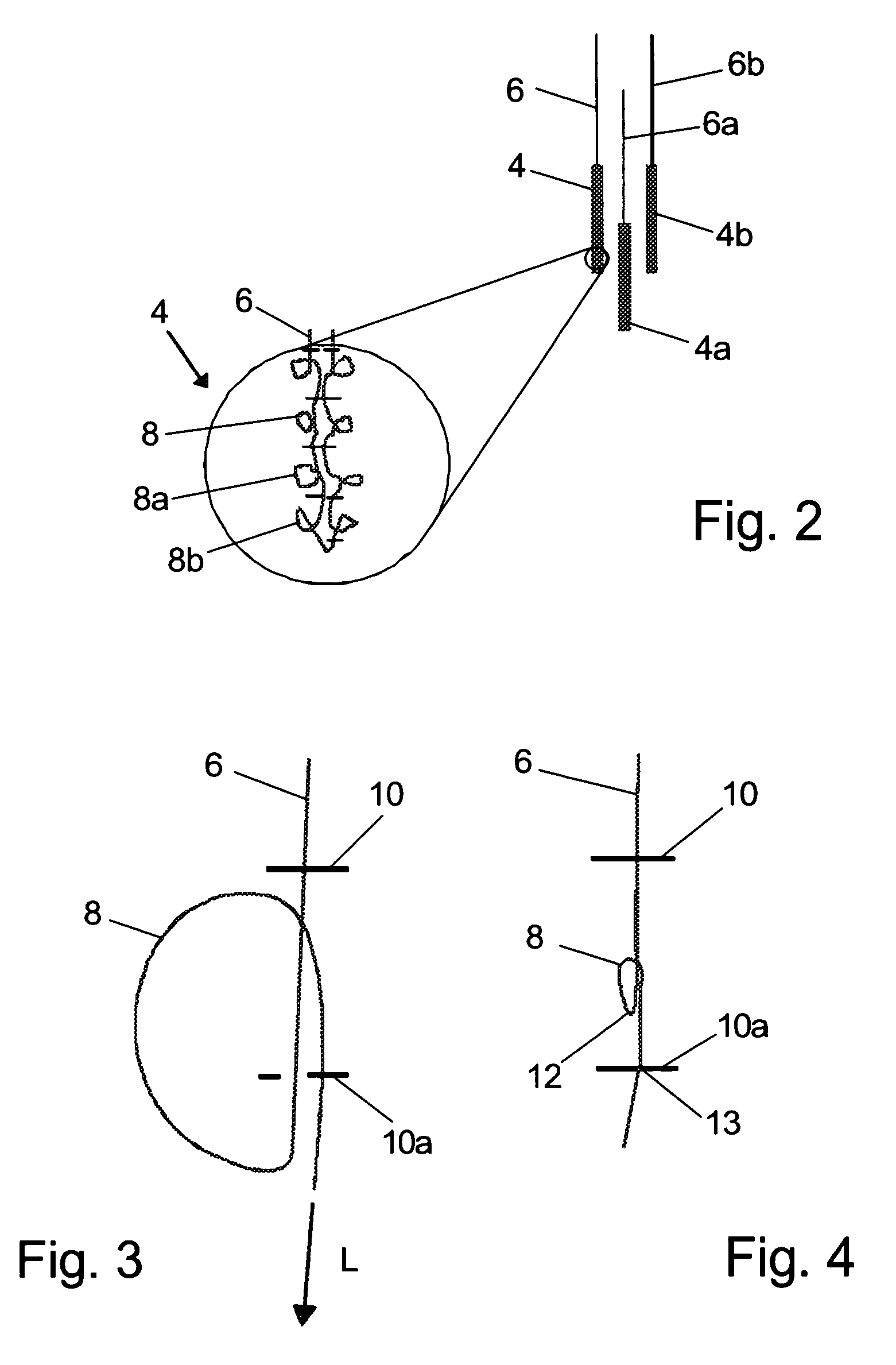Light-emitting textile structure, in particular for medical purposes, and use thereof
a textile structure and light-emitting technology, applied in the field of light-emitting textile structure, can solve the problems of difficult realization of woven textile structure, difficult to realize with woven textile structure, and many applications, and achieve the effect of great flexibility
- Summary
- Abstract
- Description
- Claims
- Application Information
AI Technical Summary
Benefits of technology
Problems solved by technology
Method used
Image
Examples
examples
[0038]FIG. 1 shows a section of a light-emitting textile structure that comprises a flat support 2 onto which is affixed a light-emitting element 4 with a light-supplying optical fiber 6. The light-emitting element 4 comprises a number of loops 8, 8a, 8b, etc., the curvature of which is selected in such a way that a lateral exit of light from the optical fiber 6 occurs due to the absence of total reflection. Therefore, the above-mentioned loops act as output zones. It should be noted that the light-emitting element shown in FIG. 1 is formed from a single optical fiber, and for reasons of drawing only the parts of the fiber 6 that lie above the drawing plane are shown. The light-emitting elements can be attached to just one side or to both sides of support 2 depending on what type of application the textile structure is intended for.
[0039]In its entirety, the light-emitting textile structure comprises a plurality of light-emitting elements with associated optical fibers, with exactly...
PUM
 Login to View More
Login to View More Abstract
Description
Claims
Application Information
 Login to View More
Login to View More - R&D
- Intellectual Property
- Life Sciences
- Materials
- Tech Scout
- Unparalleled Data Quality
- Higher Quality Content
- 60% Fewer Hallucinations
Browse by: Latest US Patents, China's latest patents, Technical Efficacy Thesaurus, Application Domain, Technology Topic, Popular Technical Reports.
© 2025 PatSnap. All rights reserved.Legal|Privacy policy|Modern Slavery Act Transparency Statement|Sitemap|About US| Contact US: help@patsnap.com



